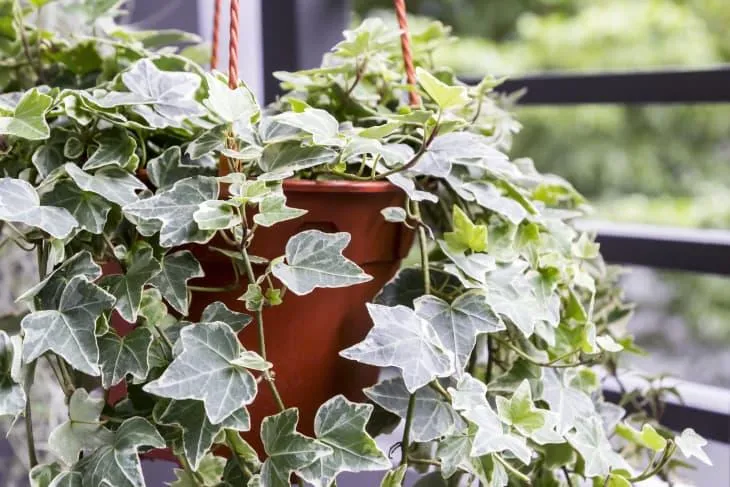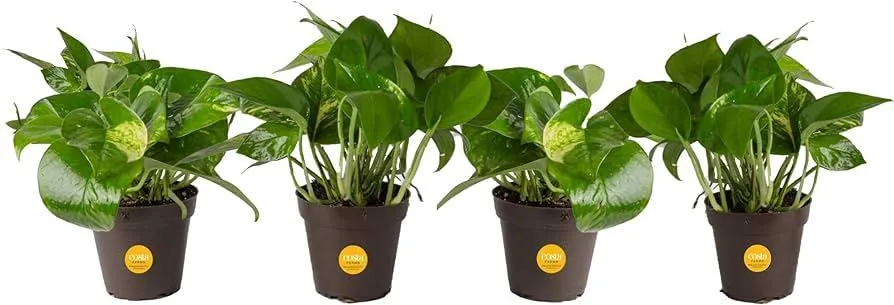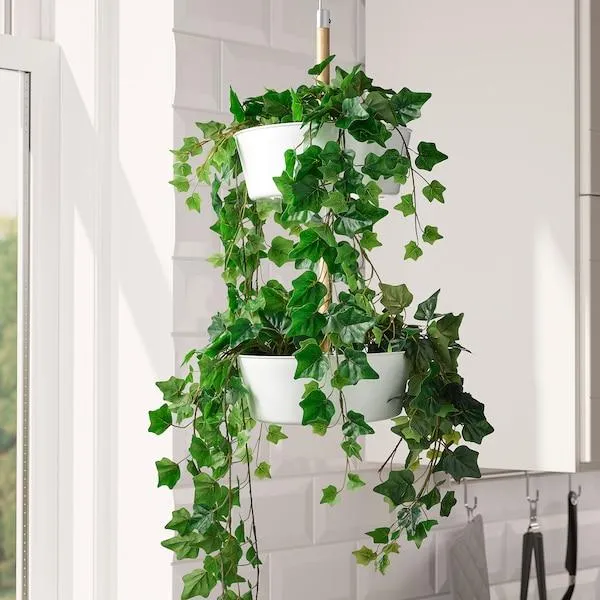A Detailed Guide to Caring for Your Ivy Plants
If you’re looking to add some low-maintenance greenery to your home or office, ivy plants are a great choice. From English ivy to Swedish ivy, these vines can lend a touch of nature to any space. However, successful ivy care does require some know-how. In this article, I’ll cover all the basics of caring for ivy plants so they thrive for years to come.
Light Requirements
Light is crucial for ivy plants. Most varieties prefer bright, indirect light. Direct sun can scorch their leaves, so it’s best to position ivies out of direct rays. East- or west-facing windows provide ideal light. From my experience, ivies situated too far from a light source will become leggy and lose their vibrant color. Yet too much direct sun is also a no-no. Finding that sweet spot is key.
Watering Tips
When it comes to watering ivy plants, the rule of thumb is to water when the top inch or so of soil is dry. Overwatering will cause root rot, so it’s essential to allow the soil to dry out in between waterings. I always stick my finger in the soil to check moisture levels before watering. Kind of like a mom checking her baby’s diaper, amirite? Ivy plants can go a week or longer between waterings, depending on conditions. The key is monitoring soil moisture closely rather than watering on a set schedule.
Humidity Levels
Ivy plants love humidity. In their natural environments, humidity tends to be on the higher side. While a home or office probably won’t match ideal forest conditions, there are some tricks you can use. Group ivy plants together for a local humidity boost. You can also use pebble trays filled with water underneath. I’ve found misting leaves daily with a spray bottle helps too. Admittedly, this can get annoying real fast. But higher humidity goes a long way in keeping ivy leaves spotless and shimmery green.

Fertilizing
When it comes to fertilizing an ivy plant, less is more. Too much fertilizer can damage roots or cause leaf burn. I recommend only fertilizing during the growing season – spring through fall. Use a diluted, all-purpose liquid plant food once a month. You can also sprinkle a light layer of timed-release fertilizer granules around the root zone in early spring before new growth begins. Regardless of method, always follow label instructions carefully for best results. Overfertilizing can totally wreck an otherwise happy ivy plant, so restraint is key.
Pruning and Training
Ivy vines grow vigorously if conditions are right. This means regular pruning is necessary to maintain a bushy form and prevent legginess. Snip off long, straggly stems that detract from the plant’s shape. You can also train ivy to grow up a trellis, pole, or other support by wrapping newly sprouted vines around the structure. I’ve found it helps to use floral wire or twist ties at first until vines attach on their own. With consistent pruning and guidance, ivies make beautiful hanging baskets or topiaries. Just don’t let the vines invade places you don’t want!
Repotting
Most ivy plants are content spending years in the same pot. However, if roots have completely filled the container, it’s time to repot in fresh soil. I like to repot in early spring or late summer when plants are in active growth. Use a pot with drainage holes that’s only 1-2 inches larger than the current one. Gently tease out the root ball and trim off any damaged or matted roots with scissors. Replace the top 1-2 inches of soil and firm lightly. Ivy plants are quite resilient to repotting as long as moisture levels are maintained afterward. It’s also fine to divide rootbound clumps or take cuttings to propagate more plants.
Dealing with Pests
Unfortunately, ivies can attract their fair share of bugs. Mealybugs, scale, and spider mites are common pests. The good news is they’re usually easy to treat. Isolate infected plants and wipe leaves/stems with a cotton ball dipped in isopropyl alcohol. Neem oil or insecticidal soaps also work wonders as natural remedies. Repeated applications may be needed to fully remove pests. Prevent infestations by routinely inspecting leaves and stems. Catching issues early makes a world of difference! Low pest populations won’t kill an otherwise healthy plant. With TLC, ivy plants can easily recover from minor bug problems.

Weather and Temperature Tolerances
Most indoor ivy varieties are surprisingly hardy and adaptive. They can handle average home temperatures between 60-80°F. Swedish ivy is one of the toughest, tolerating 50-90°F with aplomb. Drafty areas or near cold windows may cause leaf drop in winter, so it helps to move plants away from drafts. However, short stints below 50°F won’t instantly kill ivy plants – just don’t expect much growth until temps rise again. Outdoor ivies may need winter protection below 25°F. All in all, following basic care practices ensures indoor or outdoor ivies stay glossy and cheerful through temperature fluctuations.
Dealing with Diseases
Fortunately, diseases aren’t overly common with healthy ivy plants. But keep an eye out for leaf spots or mildew, which thrive in high humidity with poor air circulation. Improving ventilation or trimming away infected leaves usually does the trick. Root rot stems from overwatering, so allowing soil to dry is key. Yellow leaves could mean too much or too little light, water, or nutrients. Diagnose the issue and adjust care accordingly. With preventative measures like proper pruning and spacing, ivies should stay disease-free for years. An occasional neem oil spray also doesn’t hurt protection-wise.
Common Ivy Plant Varieties
Here are some popular ivy types suitable for indoor growing:
- English Ivy – Hardiest selection, thrives in low to medium light. Can climb walls outside.
- Swedish Ivy – Rounded leaves with white variegation. Tolerates lower light.
- Needlepoint Ivy – Lacy green foliage resembles holly. Slow growing.
- Algerian Ivy – Vigorous vines with dark leaves turning burgundy in fall.
- Bronze Ivy – Variegated tiny leaves turn burgundy in winter. Adds rich color.
With some TLC following the tips above, any of these ivy varieties will reward you with lush, low-maintenance greenery for years. In my experience, they even lend a nostalgic feel to spaces. Though low-key, ivies add style subtly. Just be sure not to let them totally take over! With care, propagation is also super simple via stem or leaf cuttings. So whether starting a new collection or caring for existing ivies, I hope these insights prove helpful for thriving plants. Let me know if you have any other ivy questions!

Ivy Plant Care Tips
| Watering | Water when the top inch of soil is dry. Too much water can cause root rot. |
|---|---|
| Light | Ivy prefers bright, indirect sunlight. Too much direct sun can scorch leaves. |
| Fertilizer | Fertilize in spring and summer with a houseplant fertilizer mixed at half the normal strength every 2-4 weeks. |
| Soil | Use well-draining potting mix for ivy plants. Pot should have drainage holes. |
| Pruning | Prune any dead or damaged growth to keep the plant bushy and full. |
FAQ
-
How much sun do ivy plants need?
Ivy plants basically like lots of sunlight. They do best in spots that get around six hours of direct sun daily. However, they can adjust to less light as long as they get bright indirect light. On the other hand, too much sun may kinda burn the leaves.
-
How often should ivy plants be watered?
Ivy plants should be watered whenever the top inch or so of soil appears dry. That’s usually around once a week. Nevertheless, it’s best not to keep the soil soggy and wet all the time. Perhaps water less in winter when growth slows down. Always check the soil before watering to make sure it needs more H2O.
-
What kind of soil is best for ivy plants?
Ivy plants love rich, well-draining soil. The perfect mixture basically contains organic stuff like compost along with potting soil. This type of soil retains moisture but also allows excess water to go through. Don’t use heavy clay or sandy soil, as those can be too wet or dry. Quote the experts – they advise aloose, peat-based potting mix for happy ivy!
-
How should ivy plants be fertilized?
Fertilize ivy plants in spring and summer when growth is vigorous. You can use a houseplant starter fertilizer for a quick feeding, or an all-purpose type every few months. Dilute liquid fertilizers according to package instructions – too much can burn the roots. Or do you sprinkle some granular fertilizer around the base of plants and water as usual.

-
How do I prune ivy plants?
Pruning kinda encourages new growth and keeps an ivy plant bushy. Cut off long, leggy stems or trim back parts that get scraggly looking. Sterilize pruning shears before each use. Perhaps tie back or train stems on a trellis or pole if you want an upright shape. But be careful – ivy is amazing at rooting any piece that breaks off!
Do you have any other questions about caring for ivy? If so, ask me and I’ll do my best to answer. Sometimes ivy plants can be tricky, but following the basic care instructions should keep your ivy looking stunning for years to come. Let me know if you need any other tips!
